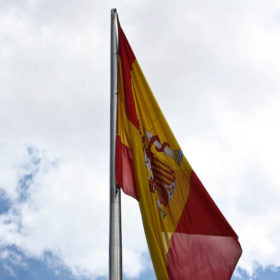Scottish & English PV landscapes end 2014 on high
Scotland has now reached 142 MW of solar PV, while across the U.K. cumulative PV capacity now stands at 4.671 GW. What are the recent PV trends in the U.K.’s regions and will Scottish PV soar in 2015?
UK auctions capacity, sparks controversy
A capacity market auction last week led to the procurement of 49.26 GW of new capacity, mainly from fossil and nuclear fuels, at a clearing price which will cost U.K. households nearly £1 billion. The government said the capacity market is necessary to ensure the lights stay on, specifically as power from renewables increases, but the policy has sparked controversy.
Portugal’s net-metering law raises faint hopes
Approval of law could propel solar sector into the fast lane, where PV is still playing catch-up to a soaring wind industry.
Croatian PV sector owes it all to rooftops
A lack of ambition across the sector has hindered solar PV’s growth in this sun-rich country, with only the small-scale rooftop sector likely to expand over the coming years.
Solar disrupts utilities out of their comfort zone
Solarpraxis Forum highlights how traditional energy utilities are struggling to cope with the expansion of the renewable energy sector, forcing a rethink of their relationship with renewables.
Swiss PV grows but FIT cuts push market towards self-consumption
The Alpine country’s unusual solar PV remuneration system obliges households and other small power producers to trade energy on the market while allowing bigger investors piece of mind through the FIT scheme. The usual practice in Europe and elsewhere is the other way round.
UK government refuses to intervene in solar farm plans
Secretary of state Eric Pickles refused to be drawn into the planning application for a 15-16 MW farm in Cumbria but is very much an interventionist when it comes to applications in the Tory heartlands in the south east of England.
Serbia inaugurates 2 MW solar farm while rejecting PV
While the country’s solar PV tariff is very good, a separate renewable energy production law allocated an extremely low quota for PV plants, including 6 MW for ground-mounted installations and 4 MW for rooftop, by 2020.
Philae sleeps, hope rests in the sun
Philae, Rosetta’s spacecraft probe, has reportedly gone to hibernation in an unknown corner of the 67P comet after its secondary batteries could not be charged due a lack of solar irradiation. But all is not lost. In contrast, a whole lot has been gained.
Spain to link Mallorca, Ibiza
Spanish electricity grid operator Red Eléctrica de España (REE) announced on Wednesday the construction of a 126-kilometer long cable interconnecting the Balearic Islands of Mallorca and Ibiza. The project can potentially benefit PV, which now lags behind in the sun-washed islands of the Mediterranean Sea, but this will require time.


